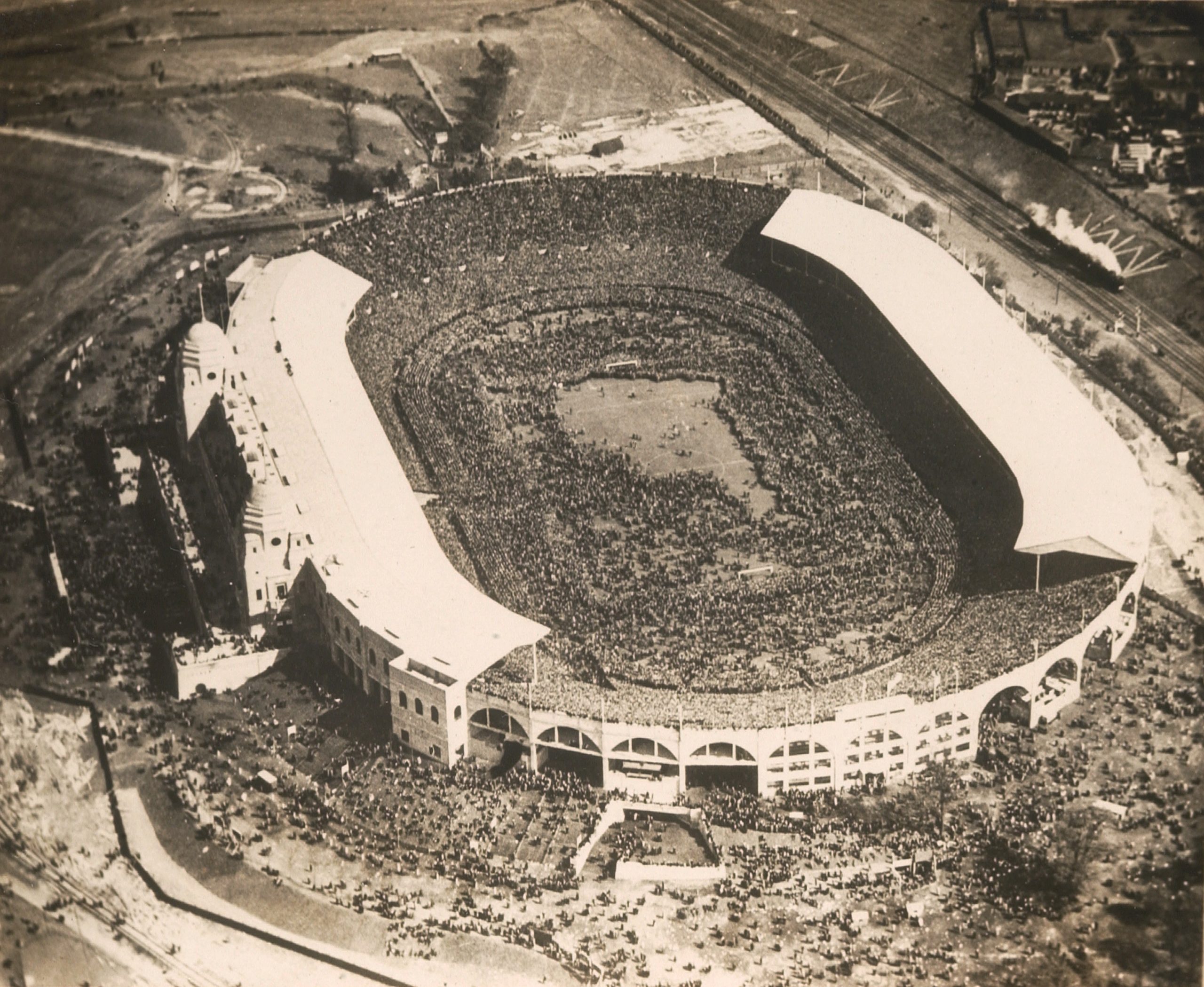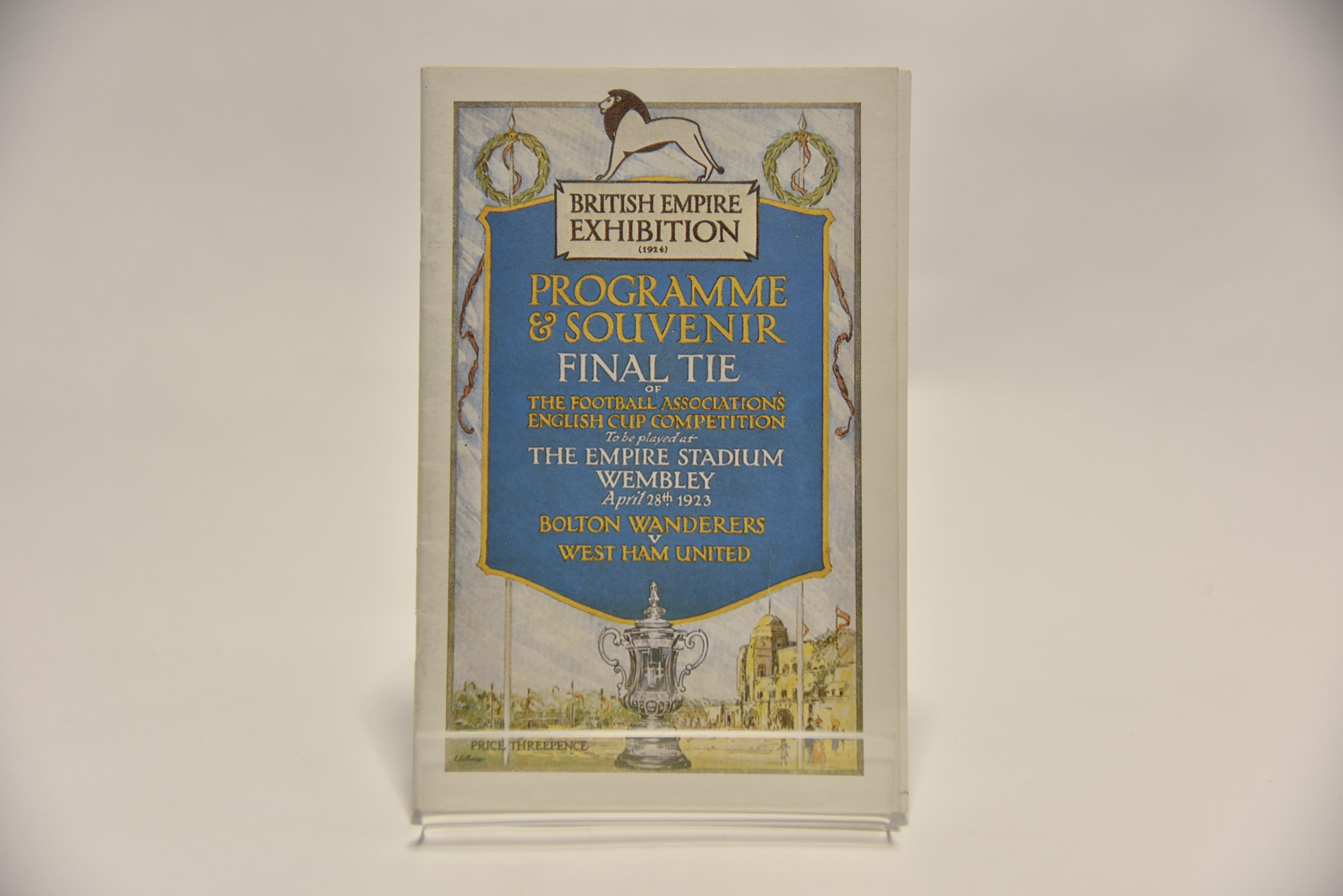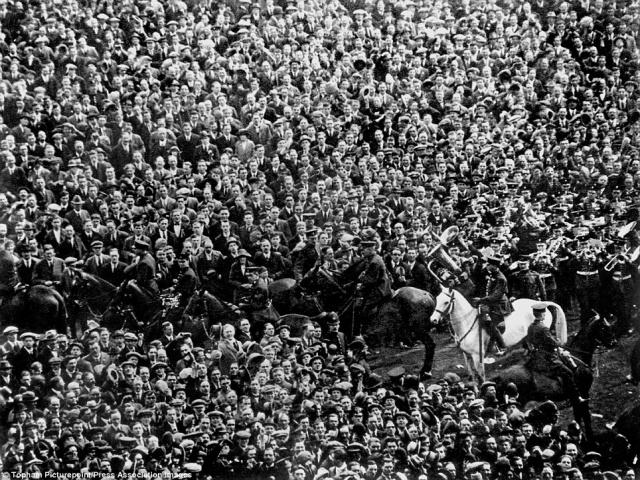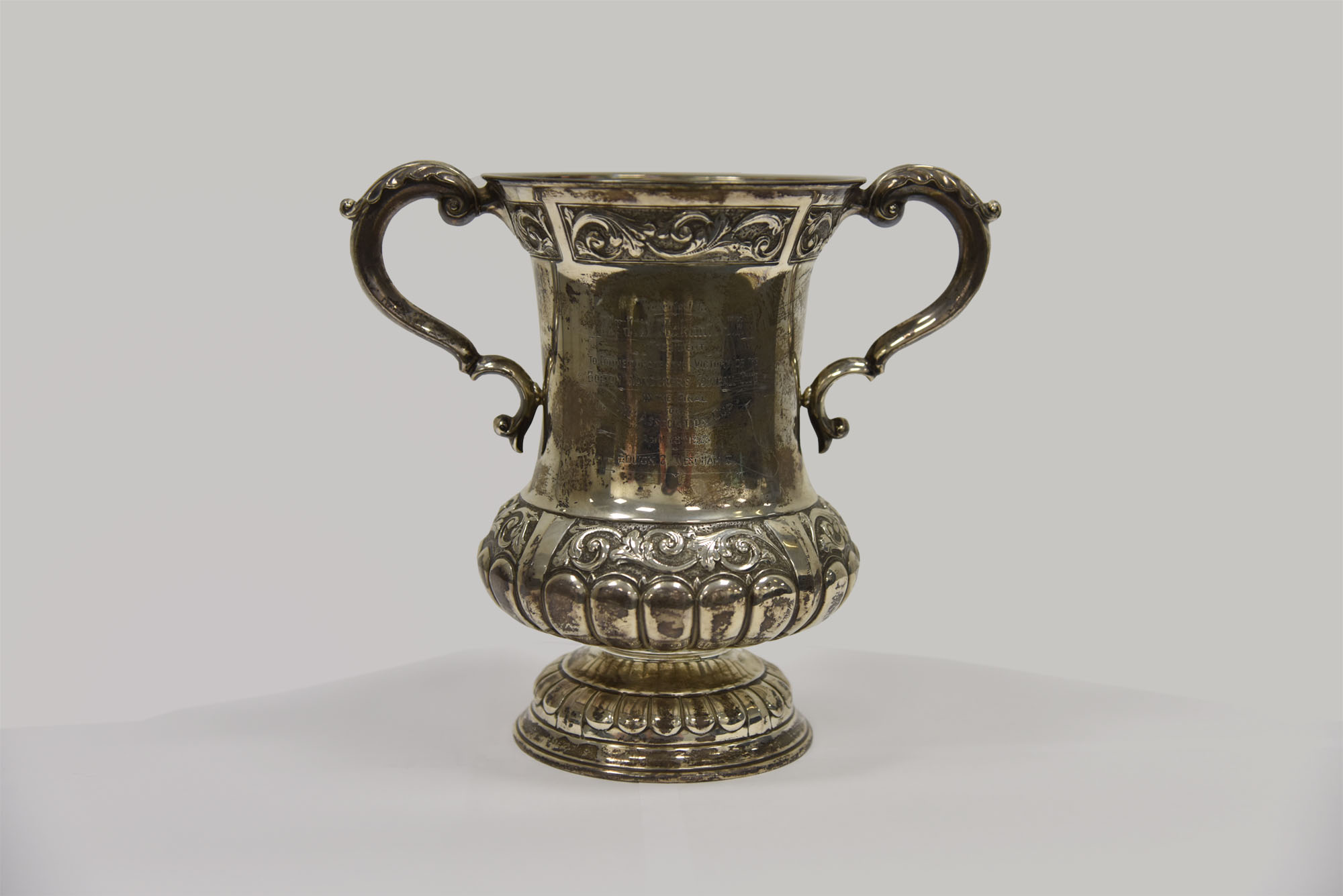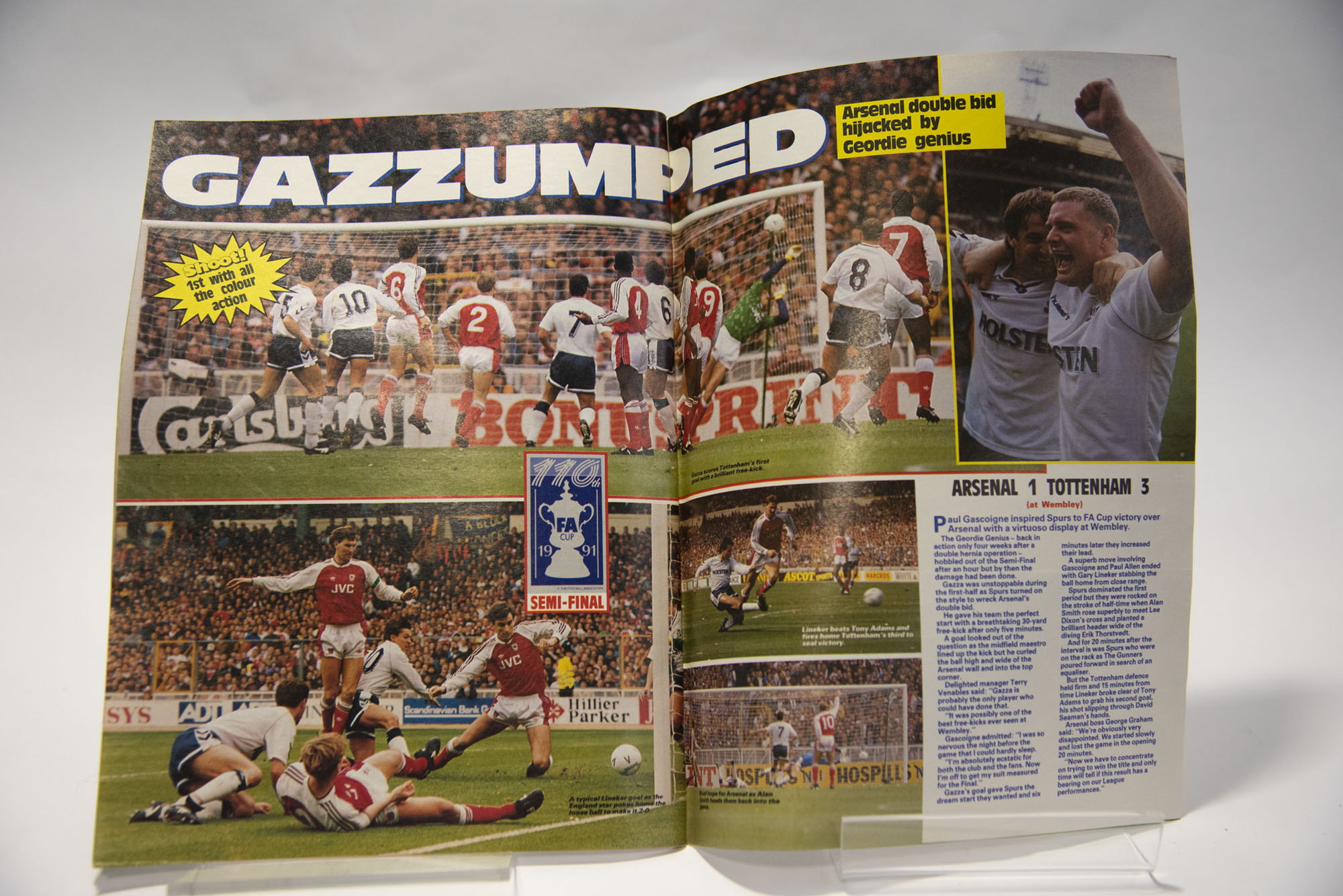Wembley 100: The White Horse Final Calendar
27 Apr 2023
Callum Lane looks at the first ever game to be played at the old Wembley Stadium: the 1923 FA Cup Final, later known as the White Horse Final.
This week marks one hundred years since the FA Cup Final was held at Wembley Stadium for the first time. The National Football Museum, Wembley Stadium and the Football Association (FA) are celebrating the momentous occasion by taking a look back at where Wembley’s intrinsic link with the FA Cup began.
The FA Cup before Wembley
Prior to 1923, the FA Cup Final was staged at seven different locations, with the first being held at the Kennington Oval in 1872. Over the next fifty years, the final would take place across the country at Lillie Bridge, Manchester’s Fallowfield Stadium, Everton’s Goodison Park, The Crystal Palace, Manchester United’s Old Trafford and Chelsea’s Stamford Bridge.
Further one-off replays were held at the Racecourse Ground, Burnden Park and Bramall Lane: the homes of Derbyshire County Cricket Club, Bolton Wanderers and Sheffield United respectively.
Wembley’s Story
The stadium was constructed to feature as the main site for the 1924-25 British Empire Exhibition, with the stadium branded as the ‘Empire Stadium’. Constructed a year early in 1923, Wembley boasted the largest capacity of any stadium in the world, with an official capacity of 125,000 standing spectators.
The decision was made by the Football Association that, on 28 April 1923, the FA Cup Final would be held at Wembley Stadium, marking the first public event to be held at the stadium, as well as the birth of a footballing tradition which still exists to this day. But, like most footballing stories, the 1923 FA Cup Final wasn’t without controversy.
The 1923 ‘White Horse’ FA Cup Final
The Final was contested between Bolton Wanderers and West Ham United and marked the first football fixture to take place at the new ground. Due to the low turnouts seen at previous years’ FA Cup Finals, a conscious attempt by The FA and Wembley Stadium was made to advertise the fixture.
The advertising campaign worked, as hundreds of thousands of fans from across the country amassed upon the streets of North London in hopeful attempts to gain entry to English football’s grandest occasion. Sunny skies and a London team in the final saw a larger than expected crowd arrive at Wembley and was exacerbated by the fact that, due to the FA’s somewhat pessimistic hopes of filling the stadium, the event was not pre-ticketed.
With London brought to a standstill, and some fans walking up to fifteen miles to watch the game, Wembley’s grandeur quickly descended into scenes of utter chaos. Despite its record-breaking capacity, Wembley and its one hundred and four ticket turnstiles were quickly overwhelmed, leading to thousands of fans without tickets gaining entry to the stadium and quickly filling up the terraces.
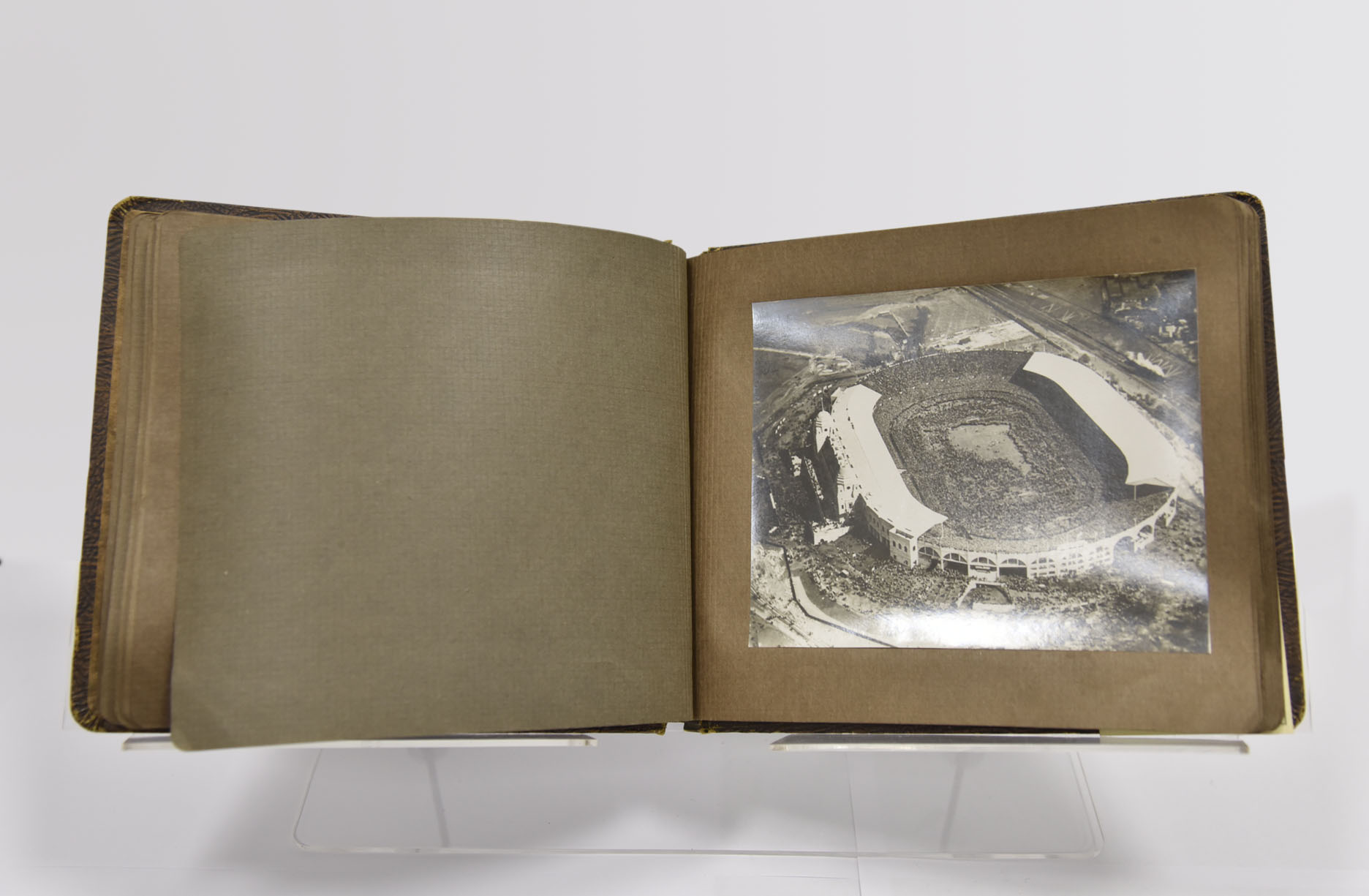
A photograph album depicting the events of the 1923 FA Cup Final. Scroll through a selection of the images below.
Official ticket sales of the fixture claim that 126,047 fans were in attendance, with the Metropolitan Police estimating that this figure was actually closer to 300,000: other sources claiming the true number of fans present at the match far exceeded the Met’s estimates. As the area surrounding the stadium became gridlocked, the Bolton team were forced to abandon their coach and make their way to the stadium on foot, amongst the supporters. Lacklustre policing saw the chaos spread onto the pitch, with fans in the terraces being forced onto the playing turf as more and more spectators flooded in.
As panic grew, and helpless stewards and officials watched on, the decision was made to delay kick-off. Royal Officials purportedly told both teams that if a game were to be played, it would be under the pretext of a friendly fixture, with the official final being rescheduled for a few weeks in advance.
It was under this assumption, and the arrival of King George V, that the players were brought out onto the pitch. Yet, unsurprisingly, they were quickly engulfed by the immense size of the crowd. Players on both sides were shaken, some were injured, and Bolton’s front man, Jack Smith, ended up being reunited with his brother, whom he had not seen in six years.
However, despite the chaos, the panic and a somewhat unexpected family reunion, the crowds were eventually drawn off the pitch by mounted police officers. One horse, named ‘Billie’ and ridden by PC George Scorey became the iconic image for which this FA Cup fixture is remembered today.
Despite the fact Billie was actually light grey, and other horses were present, the contrast of the black and white television broadcast ensured amongst the black and grey backdrop a gleaming white horse stood aloft amongst the clamouring supporters. Due to the actions of Billie and PC Scorey, the match was dubbed the ‘White Horse Final’: a name that persists to this day.
As fans were pushed back off the pitch, the game eventually kicked off 45 minutes late, and not a minute too soon for the hundreds of thousands of fans eager to see the first ever instance of Wembley FA Cup action. West Ham went into the game as underdogs but carried the support of London and many neutral supporters, whilst Bolton were the favourites to secure FA Cup glory.
Wanderers struck first after West Ham’s Tresadern became stuck in the pitchside crowd melee, allowing Bolton’s David Jack to open the scoring, unintentionally knocking a fan standing behind the goal unconscious. Bolton’s second and winning goal came in even more controversial circumstances, as the West Ham players argued Jack Smith’s header had come off the post; referee D. H. Asson, believed the shot had instead rebounded off a fan standing behind the goal.
One of the most chaotic and ridiculous fixtures in the history of English football came to an end in somewhat contradictory circumstances as both sides failed to create any noteworthy chances after Bolton’s second. Smith and Jack’s goals ensured Wembley’s first ever FA Cup belonged to the North West outfit.
The legacy of Wembley and the White Horse Final
As the dust settled, plans were made to ensure future FA Cup Finals at Wembley were pre-ticketed events. Wembley Stadium would host every single FA Cup Final for the rest of the century, hosting its last in 2000 when Chelsea defeated Aston Villa, before the stadium’s demolition in 2002 and subsequent redevelopment and reopening in 2007.
The original Wembley Stadium saw some of the most iconic footballing moments in history, from Wimbledon’s ‘Crazy Gang’ upset against Liverpool, Gazza’s thirty-yard screamer against Arsenal in the first FA Cup Semi-Final to be held at Wembley, and, of course, England’s only World Cup triumph in 1966.
The legacy of the White Horse Final can be seen throughout the National Football Museum’s collections, with the official matchday programme, an original picture book showing the chaotic scenes, Bolton Wanderers’ replica FA Cup from the day, and plenty more on display.
Save money and book your National Football Museum tickets in advance by clicking here.

